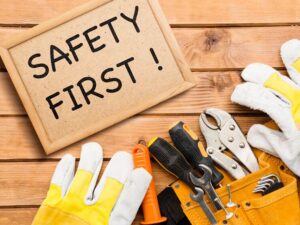
Safety Isn’t Just a Buzzword
Ever wonder what one workplace accident could cost your logistics company? Beyond the dollars—think injuries, downtime, maybe even a lawsuit—it’s a gut punch to your team’s morale and your reputation. In the fast-paced world of logistics and transportation, where trucks are rolling 24/7 and warehouses hum with activity, keeping your people safe is non-negotiable. That’s where ISO 45001 certification comes in, a global standard for occupational health and safety that’s like a lifeline for your operations.
This isn’t just about compliance or dodging fines. It’s about showing your drivers, warehouse crews, and clients that you’ve got their backs. ISO 45001 certification means you’re committed to a safer workplace, and let’s be honest—who doesn’t want to work for or with a company that prioritizes people over profits? So, why should logistics firms care? Let’s break it down.
What’s ISO 45001 All About?
If you’re picturing a stack of safety manuals gathering dust, let me set you straight. ISO 45001 certification is a framework that helps you manage workplace safety like a seasoned pro. Think of it as a GPS guiding you through the chaos of keeping your team safe—whether they’re behind the wheel or stacking pallets. It’s about spotting risks, setting up clear safety policies, and getting everyone involved, from drivers to dispatchers.
At its core, ISO 45001 certification focuses on assessing hazards—like slippery warehouse floors or driver fatigue—and putting controls in place to prevent accidents. It’s flexible, so whether you’re running a small delivery fleet or a global logistics giant, it works. You know what else? It plays nicely with regulations like OSHA or EU-OSHA, so you’re not doubling up on paperwork if you’re already meeting local standards.
Here’s the thing: safety isn’t just about hard hats and harnesses. It’s about building a culture where everyone feels empowered to speak up about risks. That’s what ISO 45001 certification brings to the table, and it’s a game-changer for an industry where one misstep can cause serious harm.
The Safety Challenges in Logistics
Logistics is a high-stakes game. You’re juggling tight delivery schedules, driver shortages, and a million moving parts—literally. But safety? It’s often the first thing to slip through the cracks. Drivers face long hours, increasing the risk of fatigue-related crashes. Warehouse workers deal with heavy loads, forklifts, and slippery surfaces. And don’t forget fleet maintenance—worn brakes or bald tires can spell disaster. Remember the 2021 trucking accident stats? Over 4,000 fatalities in the U.S. alone. That’s a wake-up call.
Here’s the reality: your industry faces unique hurdles. High turnover means new hires might miss critical safety training. Budgets are tight, and safety upgrades often compete with fuel costs or new trucks. Then there’s regulatory pressure—OSHA, DOT, you name it. It’s enough to make your head spin. Yet, here’s the contradiction: safety is critical, but it’s often sidelined for efficiency. Sound familiar? ISO 45001 certification steps in to fix that, and I’ll show you how.
Why ISO 45001 Is a Win for Your Business
Let’s talk about why ISO 45001 certification is worth your time. It’s not just about avoiding accidents—it’s about building a stronger, more reliable business. When your team feels safe, they’re happier, more productive, and less likely to jump ship. And in an industry where driver turnover can hit 90% a year, that’s huge.
Here’s why ISO 45001 certification makes sense for logistics and transportation:
- Fewer Accidents: Structured risk assessments cut down on injuries, from warehouse sprains to road collisions.
- Better Morale: A safety-first culture shows your team you care, boosting loyalty and engagement.
- Cost Savings: Fewer incidents mean lower insurance premiums and less downtime. The average workplace injury costs $42,000, per the National Safety Council.
- Client Trust: Shippers and clients love working with certified companies—it’s a sign you’re reliable and professional.

A quick story: a Midwest trucking company adopted ISO 45001 certification in 2023. Within a year, their incident rate dropped 20%, and they saved $100,000 on insurance. Drivers started sticking around longer, and clients noticed the safer, more professional vibe. That’s the kind of impact we’re talking about.
ISO 45001 certification is like a safety net for your operations. It’s not a cure-all—it takes work—but it pays off in ways that go beyond compliance. So, how do you get there? Let’s demystify the process.
Getting Certified: Easier Than You Think
Okay, ISO 45001 certification might sound like a mountain of paperwork, but it’s not as daunting as it seems. Here’s the breakdown:
- Gap Analysis: Assess your current safety practices. Spot gaps, like missing driver training or outdated equipment checks.
- Build Your Safety System: Create an Occupational Health and Safety Management System—think policies, procedures, and training plans.
- Implementation: Roll out safety measures across your fleet and warehouses, from fatigue monitoring to forklift protocols.
- Certification Audit: A third-party auditor (like SGS or Bureau Veritas) reviews your system. Pass, and you’re certified. If not, they’ll guide you to fix it.
The audit has two stages: Stage 1 checks your documentation, and Stage 2 ensures you’re walking the talk. It’s thorough but fair—think of it as a safety stress test. Tools like SafetyCulture or consultants like DNV can streamline things, automating tracking and keeping you organized. A quick aside: I’ve seen companies try to go it alone and burn out. Experts make this smoother.
Here are some tips to nail ISO 45001 certification:
- Get leadership buy-in—without it, you’re spinning your wheels.
- Involve employees; drivers and warehouse staff know where the real risks are.
- Start with high-risk areas, like long-haul routes or heavy lifting zones.
- Keep records tight—auditors love clear evidence of compliance.
Worried about the effort? It’s an investment, but the payoff—safer teams, happier clients—is worth it. Let’s tackle the hurdles next.
Tackling Roadblocks in Logistics
Let’s be honest: change isn’t easy in logistics. Your team might groan, “We’re too busy for ISO 45001 certification.” Budgets are stretched thin, and safety training can feel like one more thing on an overflowing plate. Plus, with tight schedules, who has time for audits? These are real roadblocks, but they’re not dealbreakers.
Try a phased approach. Start with one depot or a single fleet, then scale up. Engage your team early—drivers and warehouse crews can spot risks you might miss. Tools like SafetyCulture’s iAuditor app can automate inspections, saving time. And here’s a pro tip: tie ISO 45001 certification to your mission. Remind everyone it’s about keeping people safe, not just checking boxes. That shifts the mindset.
The pride of a safer workplace is real. Imagine a driver knowing their route is backed by a solid safety plan, or a warehouse worker feeling confident with updated equipment. That’s the kind of culture ISO 45001 certification builds. With accidents on the rise—OSHA reported a 5% uptick in logistics injuries in 2024—can you wait any longer?
Conclusion: Safety First, Success Follows
ISO 45001 certification isn’t just a standard; it’s a game-changer for logistics and transportation companies. It cuts accidents, boosts morale, and makes you the kind of partner clients trust. Can you afford to skip it? Every day without a solid safety plan is a risk—to your team, your clients, and your bottom line.
You’re in this industry to keep goods moving and people safe. ISO 45001 certification helps you do both. It’s not a walk in the park, but it’s worth it. Start small, get help, and take the first step today. Your team—and your business—will thank you.




